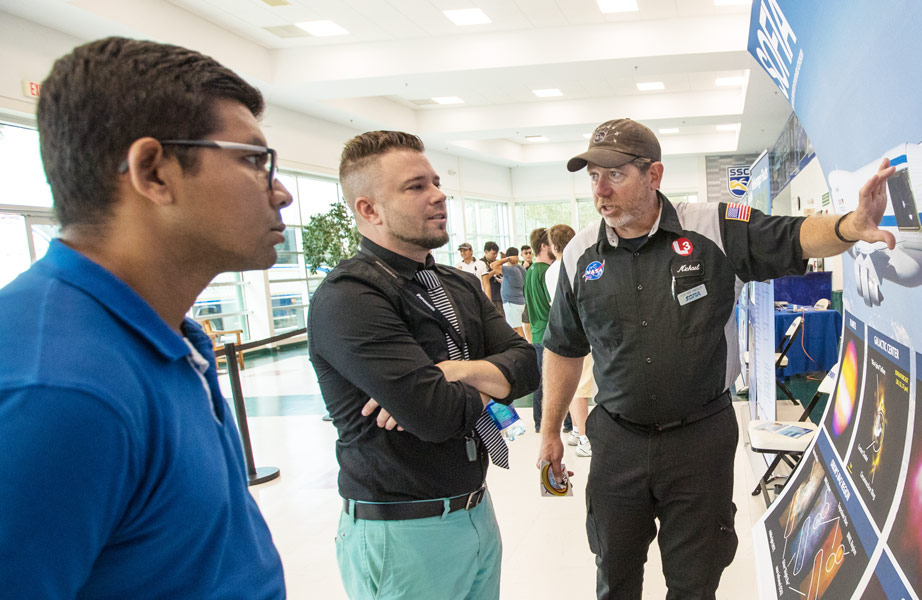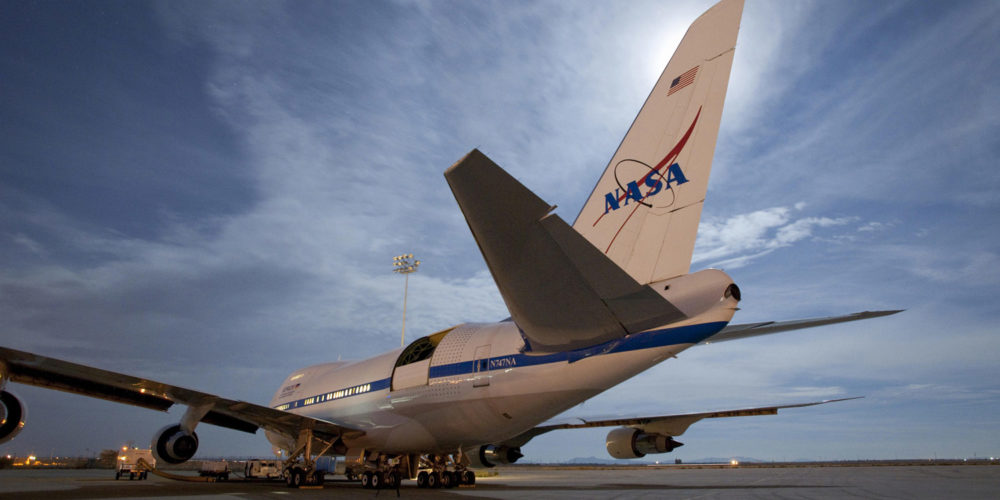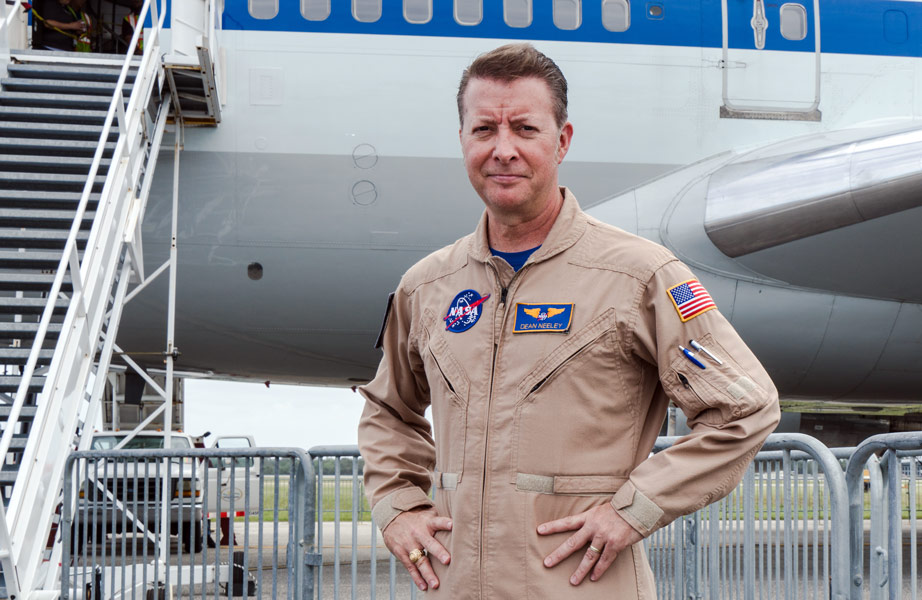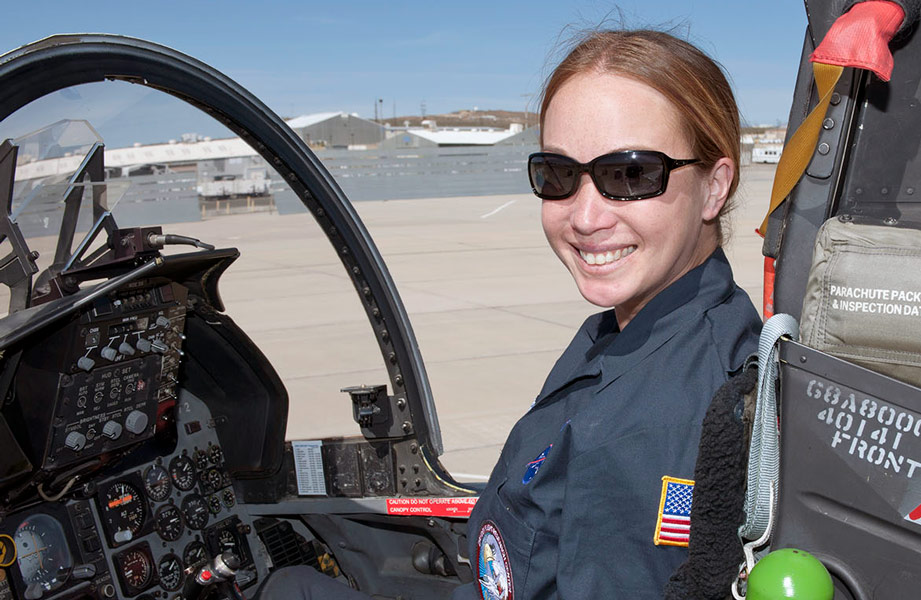It’s 7:55 p.m. Eastern Time on Thursday, Oct. 5, 2017. Navigator Jeff Wilson (’97, WW) sits in tense anticipation as he waits for confirmation that the 747 he’s flying has reached its rendezvous point.
Years ago, Wilson was a navigator on B-52 bombers for the Air Force. His military training and experience prepared him well for tonight’s mission. The target: Triton, a unique moon in a retrograde orbit around the planet Neptune that’s located 2.6 billion miles from Earth.
It’s a make-or-break mission with a two-minute window of opportunity. Triton’s occultation, an eclipse-like event where the moon passes between the Earth and a faraway star, will cast a fast-moving shadow in a narrow path over the Atlantic Ocean. It’s Wilson’s job to make sure that the Stratospheric Observatory for Infrared Astronomy (SOFIA), a modified 747 Special Performance (SP) aircraft equipped with a 2.5-meter, 17-ton infrared telescope, is there to intercept the shadow at the right time.
SOFIA, a space science partnership between NASA and the German Aerospace Center (DLR), has a distinct advantage over ground-based telescopes. It flies at an altitude of 39,000 to 45,000 feet, which is above 99 percent of the water vapor in Earth’s atmosphere. This gives the telescope a clearer view of astronomical events.
Moments later, Wilson gets the confirmation he’s waiting for. The science director announces the mission’s success. The occultation was captured and recorded, including the all-important central flash, when the light of the eclipsed star is focused and intensified through Triton’s atmosphere.
Wilson and the entire SOFIA crew celebrate with handshakes and pats on the back.
His third occultation to navigate for NASA, Wilson says mid-flight changes are common. For Triton’s occultation, the original plan moved about 400 nautical miles, he says.
“It’s a lot like a bomber,” he says. “You basically have a target time, and you have to make your target time precise. Because we fly at a high altitude, you have like a 10-knot window in speed to work with. You have to think ahead, and you have to use geometry, because you can’t use air speed.”
He adds, “It’s stressful, it’s challenging, but it’s rewarding at the same time.”
SOFIA Eagle Team
While they weren’t on the aircraft for this mission, three other Embry-Riddle alumni are also instrumental members of the SOFIA team: avionics specialist Andrea Davis Muir (’12, WW), aircraft mechanic Mike Woodworth (’10, WW) and research pilot Dean Neeley (’03, WW).
Neeley piloted SOFIA on other science missions earlier in the week and flew the test flight the night before Triton’s occultation. In addition to SOFIA, Neeley flies several other highly modified scientific research aircraft for NASA, including the single-seat Lockheed ER-2 high-altitude science jet, the Gulfstream G-II mission support aircraft and the C-20A (G-III) science platform aircraft that carries the NASA Jet Propulsion Laboratory’s synthetic aperture radar.
“They’re Frankenstein aircraft,” Neeley says. “None of the controls are standard. You have to get in there, take a deep breath and take it slow. It’s not like getting in the Cessna you get in every day, where you can do it blindfolded.”
Woodworth’s and Muir’s jobs kick in before and after each flight. They help ensure that the aircraft and its avionics systems are maintained and performing at optimal levels.
“We don’t want to lose out on any science because of a maintenance issue,” Woodworth says.
Muir says the most challenging part of her job is learning all of the different systems that SOFIA has installed. “SOFIA isn’t just a 747SP aircraft; it’s a whole observatory. Every modification includes different subsystems that need to be installed, modified and checked before and after every flight.”
The data SOFIA captured will be used to further study and characterize Triton’s atmosphere.
“During an occultation, the way the background star dims is a sensitive probe of the density and composition of the foreground object’s atmosphere. It can also give us very sensitive measurements of Triton’s size and shape,” says Terry Oswalt, chair of the physical sciences department and professor of engineering physics at Embry-Riddle’s Daytona Beach Campus.
Woodworth says SOFIA’s missions are important because “they broaden our understanding of our neighborhood, the solar system.”
Chasing Triton’s Shadow
In this video, NASA documents SOFIA’s successful capture of Triton’s occultation, an eclipse-like event where Neptune’s moon, Triton, passed between the Earth and a faraway star.
Inspiring Students
All four alumni had the opportunity to visit the Daytona Beach Campus during the days before and immediately following Triton’s occultation, which was SOFIA’s first scientific mission over the Atlantic Ocean. Regularly stationed in Palmdale, California, NASA selected the Daytona Beach International Airport as a temporary home base for SOFIA’s East Coast operation.
More than 2,000 Embry-Riddle students, faculty and staff toured the aircraft and learned more about the flying observatory from NASA representatives during its five-day stay.
Maggie Gallant, a graduate student at the Daytona Beach Campus, was impressed. “SOFIA is one of the greatest crossovers between engineering and space science,” she says.
Woodworth would agree. “I love the fact that I work on a national treasure,” he says.
Contributors: Ginger Pinholster and Deborah Circelli





